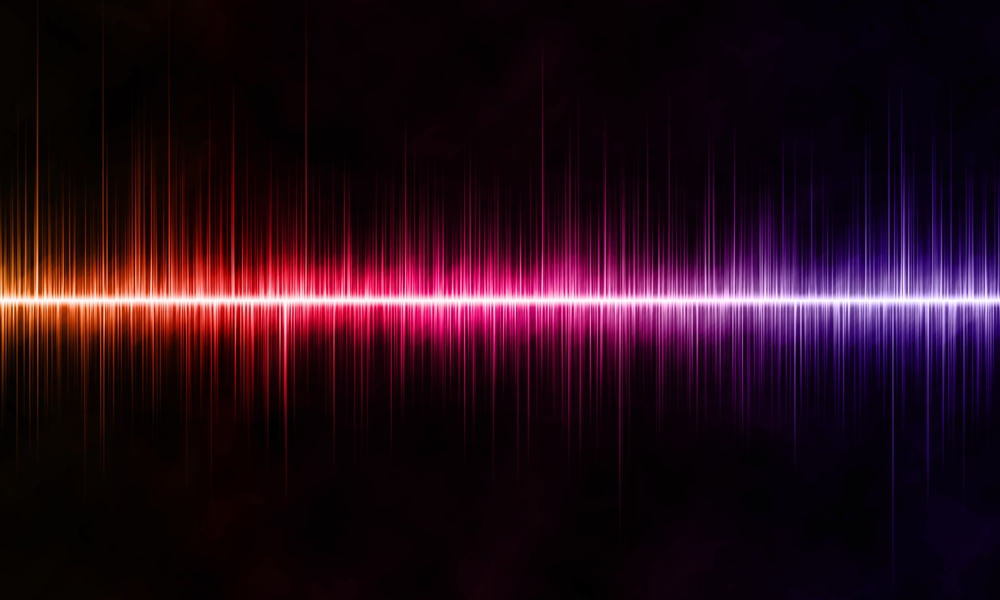 Sound waves play a fundamental role in everything from how we communicate to how we interact with the world around us. While you might not think of this invisible force, understanding your auditory system’s relationship with sound can help you preserve your hearing and appreciate the vast sensations of sound in your daily life.
Sound waves play a fundamental role in everything from how we communicate to how we interact with the world around us. While you might not think of this invisible force, understanding your auditory system’s relationship with sound can help you preserve your hearing and appreciate the vast sensations of sound in your daily life.
In this article, we’ll explore this relationship in detail, from the physics of sound waves to its path from vibration to sensation. We’ll also explore how and when these waves can be dangerous, ensuring you preserve your world of sound for years to come.
Understanding the Physics of Sound Waves
Sound waves are vibrations that travel through air, water, or other mediums to enrich our world with sounds and sensations. These vibrations originate from varying sources—be it the strumming of a guitar, the bustling noise of a busy street, or the gentle rustling of leaves.
Characterized by their frequency, amplitude, and wavelength, sound waves determine everything from the pitch of a note to the loudness of the sounds we hear. Frequency refers to the number of wave cycles per second, influencing the pitch—higher frequencies produce higher pitches. Amplitude, or the height of the waves, affects the volume, making sounds louder as the amplitude increases. Wavelength, the distance between wave peaks, also plays a critical role in how we perceive sound direction and distance.
Navigating the Path of Sound in the Auditory System
Sounds of all frequencies, amplitudes, and wavelengths surround us constantly, and our ears are constantly processing and transmitting this information. The process of sound from vibration to perception is complex, interacting with each of the following components along the way:
- Outer ear: Pinna and auditory canal
- Middle ear: Eardrum and ossicles
- Inner ear: Cochlea and auditory nerve
Outer ear: Pinna and auditory canal
The journey begins with the outer ear, where the pinna, the visible part of the ear, captures sound waves and funnels them into the auditory canal. This funneling effect not only amplifies the sound but also directs it toward the eardrum, a thin membrane that marks the boundary between the outer and middle ear.
Middle ear: Eardrum and ossicles
Upon reaching the eardrum, sound waves are transformed into mechanical vibrations. The eardrum, vibrating in response to these sound waves, moves the ossicles—a trio of tiny bones called the malleus, incus, and stapes. These bones act as a lever system, amplifying the vibrations and transmitting them to the oval window of the cochlea in the inner ear.
Inner ear: Cochlea and auditory nerve
The cochlea, a spiral-shaped, fluid-filled structure, is where the magic of hearing continues. As the vibrations cause the fluid inside the cochlea to ripple, thousands of tiny hair cells lining the cochlear walls convert these mechanical vibrations into electrical impulses. Hearing aids and other devices can be used to strengthen these impulses, clarifying the sounds before they are sent through the auditory nerve to the brain.
Exploring the Perception of Sound Waves in the Brain
The path of sound doesn’t stop at the mere transmission of electrical impulses to the brain; it involves various neural processes that translate these impulses into meaningful experiences.
This transformation occurs primarily in the auditory cortex, where sound characteristics such as pitch, loudness, and timbre are analyzed and interpreted. One of the brain’s remarkable abilities is sound localization—the process of determining where a sound originates. This capability relies on binaural cues, which include slight differences in the time it takes for sound to reach each ear and the intensity of sound at each ear.
The brain uses these cues to create a spatial understanding of the environment, enhancing our ability to react to and interact with our surroundings. Beyond the basic perception of this sound, the auditory system is deeply interconnected with the brain’s emotional and memory centers. Because of this, sound can trigger emotional responses or evoke memories due to these connections, reflecting the integral role of auditory processing in emotional and cognitive functions.
Avoiding the Dangers of Noise-Induced Hearing Loss
Unfortunately, not all impacts of sound are beneficial. Prolonged exposure to high decibel levels can lead to noise-induced hearing loss, a significant yet preventable health issue. Understanding the decibel levels that pose risks and taking steps such as wearing ear protection in noisy environments can help preserve hearing.
Preserving or Restoring Your Hearing with Professional Evaluations
While hearing loss isn’t always preventable, avoiding excessive sound and consistently monitoring your hearing can help you mitigate your risk of noise-induced hearing loss. Hearing evaluations establish a baseline for your hearing ability, allowing audiologists to identify and address any issues before they become problematic.
With this assessment, you can confidently determine any necessary preventative or therapeutic measures to preserve your hearing ability. Our experts at El Dorado Hearing have years of experience helping people maintain and restore their hearing abilities. Give us a call at 702-857-8188 or visit our contact page to get started on your journey to clear and confident communication.



Leave a Reply